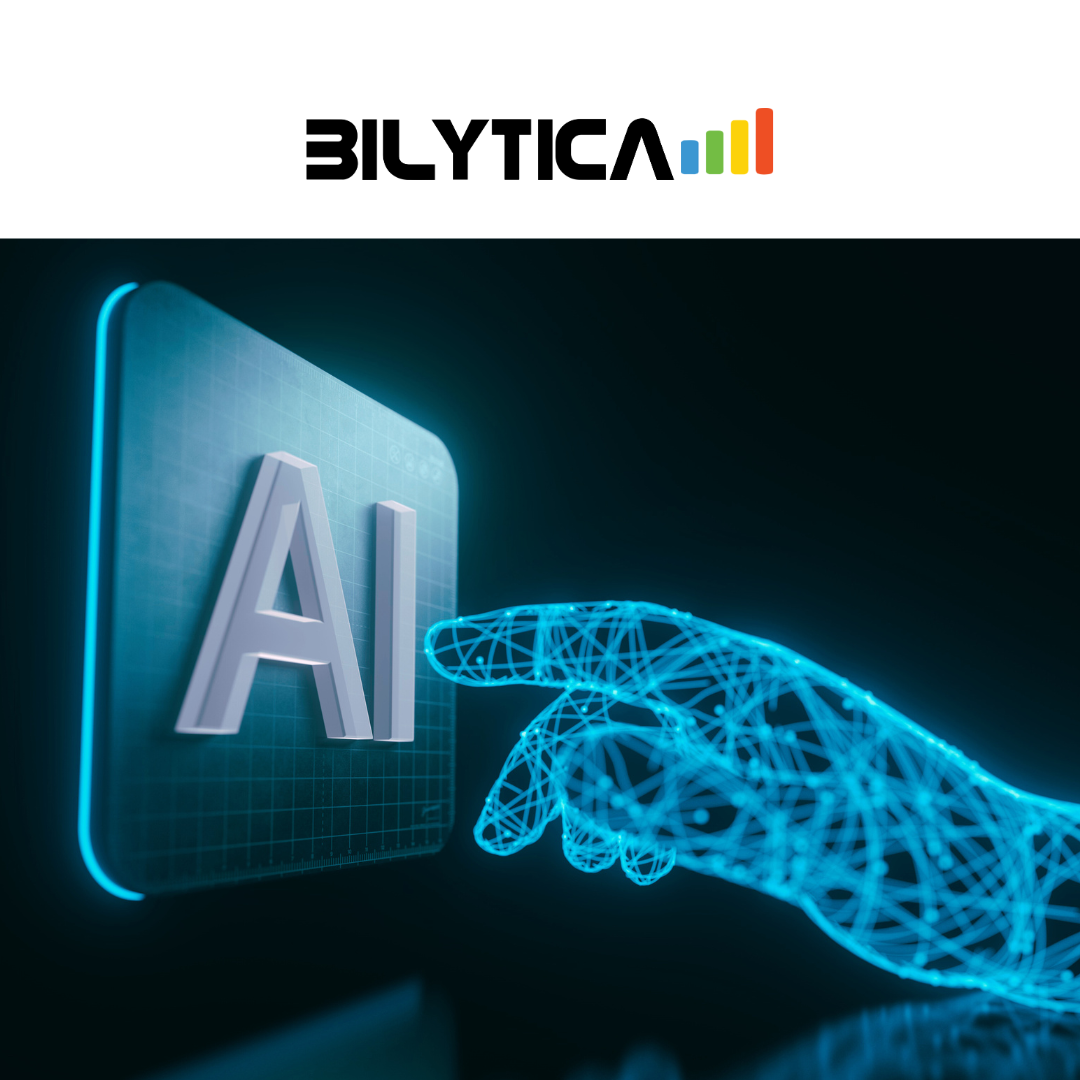Bilytica # 1 is one of the top Power BI to be more possible ahead of the curve, it would be very important for businesses to embrace predictive analytics-the ability to predict outcomes and shape proactive decisions. All the promise of Power BI aside to purely showcase powerful data visualization, it allows features to support predictive analytics as it relates with AI and machine learning in its integration. This blog discusses how Power BI is used in predictive analytics and what capabilities it brings to the organizations that have been making smarter, more informed data-driven decisions.
Click to Start Whatsapp Chat with Sales
Call #:+923333331225
Email: sales@bilytica.com
Bilytica #1 Power BI

Understanding Predictive Analytics and Power BI
What is Predictive Analytics?
Predictive analytics allows a business to look back in time and use the past history and statistical algorithms within a prediction of outcome of the future. This is used generally by a business to foresee future sales, assess risks, and make appropriate adjustments in an effort to optimize operations.
Power BI Role in Predictive Analytics: Even though Power BI is a visualization tool, it supports predictive analytics in the sense that it collaborates with AI and ML models to make possible forecasts and predictions.
Why Use Power BI to Make Predictions?
Power BI combines data visualization, real-time analysis, and the integration of machine learning into it, making it a tool for actionable predictive insights.
Time Series Forecasting using Line Chart: Line charts in BI are already embedded with automatic forecasting functions. This functions rely on past values of a given field to come up with the estimated values in future.
Configuring Forecast Settings : Users can change the settings that involve changing forecasting length, confidence interval, and even seasonality so as to tune the estimation of a system.
For example: an organization that runs retailing, it could make an application that will allow forecasting the quantity of items they should use based on expected demand monthly.
Utilization of DAX for the predictive computation
DAX Functions for Trend Analysis: Data Analysis Expressions (DAX) is a powerful formula language in Power BI. Functions like TREND and FORECAST enable basic trend analysis and predictions.
Creating Predictive Measures: Users can create measures to calculate trends, such as moving averages, that provide insights into potential future performance.
Example of DAX in Use: A financial analyst could use DAX to calculate a rolling average of revenue. It could then average out those times of fluctuation, giving them a better sense of the longer-term patterns.
Leverage AI and Machine Learning Capabilities Available in Power BI
AI Visualization Capabilities in Power BI. In this aspect, BI brings into BI AI-based visualization such as Decomposition Tree and Key Influencers. This enables analysts to develop what kind of trend may exist and what causes that end.
Using Key Influencers for Predictions: The Key Influencers visualization exposes influences on a target metric. This supports the creation of predictive models through relationship in data.
A Key Influencers visual could help the customer success team determine the elements causing customer churn so it could address those at-risk customers before it happens.
Connecting Power BI to Azure Machine Learning
Seamless Integration with Azure ML: Users might connect into Azure Machine Learning. It happens to be the service on the cloud provided by the software giant from Microsoft relative to its superior models affiliated with ML and might integrate such a service directly into those Power BI dashboards.
Building Custom Predictive Model: The user may well design different custom predictive models: like regressions, clustering, classification etc on azure ML and get those representations onto Power BI.
Example Use Case: Use Azure ML to forecast customer lifetime value (CLV) to be displayed in Power BI to optimize the campaign against high-value customers.

R and Python Integration for Advanced Predictive Modeling
Using R and Python: Power BI allows both languages, R and Python, to write and execute advanced predictive models directly within Machine Learning.
Predictive Scripts: Data scientists can develop sophisticated forecasting models, ARIMA or neural networks, as R or Python scripts to provide much more accurate predictions.
Example: An e-commerce company can use Python scripts in Power BI for predicting seasonal sales trends so that the inventory manager can prepare for peak demand periods.
What-If Scenarios with Power BI
Definition of ‘What-If’ Parameters: BI allows a user to make the creation of “What-If” scenarios possible with the ability to undertake different outcomes based on hypothetical values.
Analysis of Changes on Variables: The “What-If” parameter allows businesses to make different types of models, such as pricing changes, and then notice how they might influence revenue.
Example Use: A manufacturing company might make use of “What-If” analysis to understand how possible variable changes in raw material costs might affect profit margins to support strategic decisions.
Power BI Dataflows for Data Preparation
ETL with Dataflows: Dataflows in BI enable transformation and preparation of data at scale so that it is clean and structured for predictive modeling.
Refreshing and Cleansing Data: By means of ETL, the data is updated that is important for developing any precise predictive model.
Example: A logistics firm may use dataflows to clean up delivery data, for instance by cleaning dates and categorizing routes, before feeding it into predictive models to estimate delivery times.
Use Decomposition Trees for Root Cause Analysis
Decomposition Tree Visual: Decomposition tree is a visual in BI driven by AI that helps users drill down into data to find key contributors to a metric.
Understanding Data Drivers: It helps the user understand what drives a specific outcome and correlate the factors that influence performance for predictive predictions.
Healthcare provider can use decomposition tree to explore factors that influence waiting times for patients. This can help to forecast which bottlenecks exist and how service delivery can be improved.
Best Practices in Implementing Predictive Analytics in Power BI
Ensuring Data Quality: Predictions are based on clean, consistent data. Leverage the Power BI data transformation tools to ensure high data quality.
Selecting the Right Model and Visuals: In addition to the selection of appropriate predictive models and visuals, this enhances interpretation as predictions made are easier to communicate to other decision-makers.
For example, a predictive sales forecast could be best communicated with a simple line chart including trendlines rather than complex visualization so that stakeholders understand what the insights are trying to communicate.
Co-Working and Sharing Predictive Insights
Share Predictive Reports: When predictions are ready, BI will share the dashboards with stakeholders by facilitating a data-driven culture.
Collaborative Decisions: The access predictive analytics by Power BI will be providing teams the ability to co-work over strategic decisions aimed at sustaining the insights of different departments.
Example: A retail company can share the predictive dashboard with its inventory and procurement teams so they can coordinate restocking by using the forecasted sales.
Model Evaluation of Accuracy and Refinement of Predictions
Monitoring Performance: Regularly review the models’ accuracy to determine that they are still applicable and accurate with new data addition.
Iterative model refinement: With the Data Analytics continuous generation of new data, improve on the predictive models in the pursuit of accuracy so as to continue providing value.
Example: A bank could observe the performance of a credit risk score model and update it over time as economic conditions change.
Conclusion
Power BI is a highly flexible platform that supports predictive analytics by integrating AI, machine learning, and advanced script languages, such as Python and R. The platforms allow companies to forecast what is likely to happen in the future, to understand key drivers, and make proactive decisions based on more data-driven suggestions. In fact, organizations seeking to unlock predictive analytics will need solutions like Power BI to offer reliable, actionable, and impactful analytics.
You can explore our other blogs
Generative AI, Power BI , Power BI
11-6-2024
